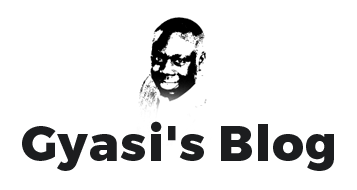Since WHO declared COVID-19 a pandemic on March 11, most states in US have been under various forms of stay-at-home orders. On April 6, Allstate and American Family Insurance announced that they would give back $600M and $200M respectively to their auto policyholders due to low vehicle usage. Their exemplary move inspired other insurance companies to issue similar refunds. An industry total of over $10 billion has been refunded back to auto insurance customers. Though this refund may seem huge on face value, it may still be lower than due as some data analytics companies like ValChoice have suggested. Given the stakes, I offer some thoughts on how we can ensure both the insurer and the insured gets a fair shake. As a customer and former professional of the insurance industry, I am well-positioned to provide a balanced and fair perspective.
- The refund should not be left at the discretion of insurance companies. If, for instance, the govt had rather ordered all policyholders to carry a $10k deductible, insurance companies would have accordingly calculated and issued refunds due to increased deductible. Similarly, given that these govt-mandated lockdowns have a direct and calculable effect on auto insurance risk, the refund should be commensurate with the reduction in risk. The minimum refund % due to customers can be calculated by the product of percent reduction in mileage (calculable from aggregate telematics data) and auto loss and loss-related expenses ratio (a data metric readily available and used to calculate the insurance premiums).
- One may ask, why is the refund not calibrated as % change in miles driven? The reason is that, apart from insurance losses, insurance premiums also pay for other expenses including salaries of employees (SG&A). Given that Covid-19 is expected to be here but only for the short-term, insurance companies should be able to continue to invest in their resources so they can continue to deliver excellent services to policyholders.
- Nevertheless, by the simple formula in (1,) the refunds due to customers should be higher than what the insurance companies have willingly offered. Auto losses and loss-related expenses account for over 65% of premiums; in 2019, they were respectively ~65% and 77% for Allstate and State Farm (obtained from financial statements). According to Arity (data analytics company), miles driven since March 8 and as of mid-April have gone down by more than 50%. These mean customer refunds should be at least 30%. My calculus is a true minimum as it contemplates only the effect of lockdowns on insurance exposure (i.e. miles driven) and does not include the indirect reduction of aggregate accident risk due to reduced traffic. So far, none of the refunds has exceeded 30%: Allstate (15%), Progressive (20%) and State Farm (25%).
- Given that public health experts project that COVID-19 will be with us for most parts of 2020, the refunds should not be only for March through May but also for all affected months. If insurance companies do not have actuarially-sound methods for estimating the marginal effect of COVID-19 on aggregate mileage for the whole of 2020, they can retrospectively calculate this effect and issue refunds according to the months in which policies were effective. If one thinks about it, such retrospective refund will not be different from refunding the policyholder for canceling his or her policy before the official policy termination date. They are both due to policyholders reducing their insurance exposures to levels lower than what they originally paid for.
- I’d like to emphasize that the refund analysis should be with respect to changes in exposure (i.e. mileage and if possible indirect effects of reduced traffic) but not losses as some analysts have been tempted to do: The lockdowns are reducing insurance risks by reducing drivers’ exposures on the roads; loss analyses however are too general and may likely pick up other effects unrelated to Covid-19 such as claim improvements due to technology.
- The department of insurance (DOI) of the various states should work with insurance companies to make sure assumptions underlying refund calculations are fair, actuarially- and data-driven. Since the severity of COVID-19 and the lockdowns differed by state, the refunds can also be calculated by state if data is available.
- Given that COVID-19 is challenging existing models and frameworks, I hope it will inspire more creative ideas and Actuarial Standards of Practices (ASOPs) for how to effectively deal with similarly unconventional and severe insurance shocks in the future.



